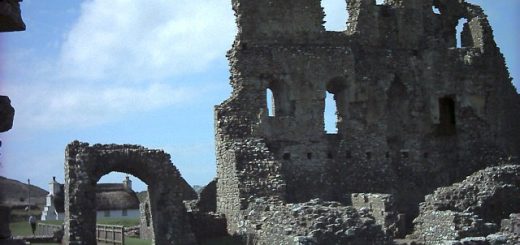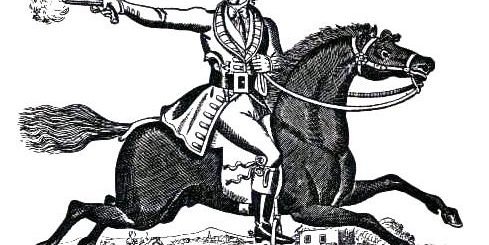The Old Rectory, Cheam
The Grade II listed Old Rectory on Malden Road in Cheam, dates from the early 16th Century and according to their website it is said to be haunted by around seven ‘shy’ ghosts. According to the author Jack Hallam, the apparition of Bishop Lancelot Andrews (born 1555 – died 25 September 1626) who was a rector at Cheam is said to appear as if he is walking on a floor level that is lower than the current day one, so it looks as he is cut off at the knees.
Nonsuch Palace, a favourite of the Tudor royalty was once part of the Parish of Cheam and five of the rectors here were or became prominent Bishops. As it is the rectory that is said to be haunted, below are some of the people who resided there.
Anthony Watson was instituted to the rectory of Cheam in 1581. He was created High Lord Almoner in 1595 and Bishop of Chichester in 1596 but continued to hold the Parish of Cheam where he lived until 1605 when he died. Durham born Anthony Watson was buried in Cheam on 19th September 1605. Thomas Playfere, Professor of Divinity at Cambridge, was instituted at Cheam following the death of Watson. He died in 1609 and is buried at St. Botolph’s Church, Cambridge.
Lancelot Andrews (born 1555 – died 25 September 1626) is the only named ghost I came across in traditional haunting literature concerning the Cheam rectory. He had been rector of St Giles’s, Cripplegate and prebendary of St Pancras, St Paul’s, Southwell and Westminster. Andrews had also been made master of Pembroke College (where he was educated) and had been Chaplain for Archbishop John Whitgift and by 1590 the Chaplain of Queen Elizabeth I who made him Dean of Westminster. He turned down the offered posts of the Bishop of Ely and Bishop of Salisbury in 1598. Elizabeth’s successor, King James I also thought highly of Andrews and he assisted during his coronation. On 3 November 1605 he was consecrated as Bishop of Chichester a post he accepted with humility. He was also made Lord Almoner to the King. He was instituted in 1609 to the rectory of Cheam, but he resigned within a few months after being promoted to the Bishopric of Ely in September 1609, so he was only there for a very short time compared to other rectors. In February, 1618, he was translated to the bishopric of Winchester.
George Mountain (born circa 1569 – died 1628) was instituted to Cheam in 1609 following the translation of Andrews to the see of Ely. In 1609 he became Bishop of Lichfield and Coventry but did not resign from Cheam until 1617 when he was made Bishop of Lincoln. He later became the Bishop of London, Bishop of Durham and Archbishop of York.
Richard Senhouse replaced Bishop Mountain at Cheam in 1617. He was made Dean of Gloucester in December 1621 and resigned from Cheam in 1624 when he was made Bishop of Carlisle on 26th September. Senhouse was from a Cumbrian family, his father being from Netherhall and his mother being the daughter of John Ponsonby of Hail Hall. Richard notably preached a sermon at the coronation of King Charles I on 2 February 1626, but died on 6 May after falling from a horse. He is buried in Carlisle Cathedral.
John Hacket (born 1592 – died 1670) replaced Senhouse and was given the living of Cheam and also St Andrew’s, Holborn in 1624. London born Hacket was educated at Westminster (where the above Lancelot Andrews, then Dean of Westminster apparently gave him money to purchase books after noticing he had promise) and Trinity College. Prior to being ordained as a minister in 1618, Hacket wrote a Latin comedy called Loiola which was performed before King James I in 1616. In 1621 he was rector of Stoke Hammond in Buckinghamshire and Kirkby Underwood in Lincolnshire and became Chaplain to King James I (born 19 June 1566 – died 27 March 1625) in 1623. As mentioned above in 1624 John received the living of Cheam and St Andrew’s from the Lord Keeper, John Williams. In 1641 Hacket was chosen to be the clergy’s advocate to plead in the House of Commons against the Root and Branch Bill which sought to remove Government of the church by a hierarchy of bishops. The Bill was defeated. The English Civil War began in 1642 and eventually he was accused before the Committee for Plundered Ministers which was tasked with silencing clergy loyal to the King Charles I, replacing them and sequestering their property. Hacket offered no defence and in 1645 his living of St Andrew’s was sequestered but he retained Cheam where he retired, hoping to go unnoticed. However, he was briefly arrested by the Parliamentarian forces under Robert Devereux, 3rd Earl of Essex (born 11 January 1591 – died 14 September 1646) before returning to Cheam where he remained until 1661. Following the Restoration of Monarchy and the accession of King Charles II, he was promoted to Bishop of Lichfield and Coventry. He resigned Cheam in 1662 after spending nearly forty years there.
John Doughty followed Hacket at Cheam in 1662. He died 25th December 1672.
Edward Bernard (born 1638 – died 1696) was rector at Cheam following John Doughty. Bernard was a scholar and resigned Cheam in 1673 when he was made Savilian Professor of Astronomy at Oxford University a post he held until 1691.
Henry Peach was instituted to the rectory of Cheam in 1780.
Through the Old Rectory’s website you can arrange to have a guided tour of the Old Rectory with a medium.




Recent Comments